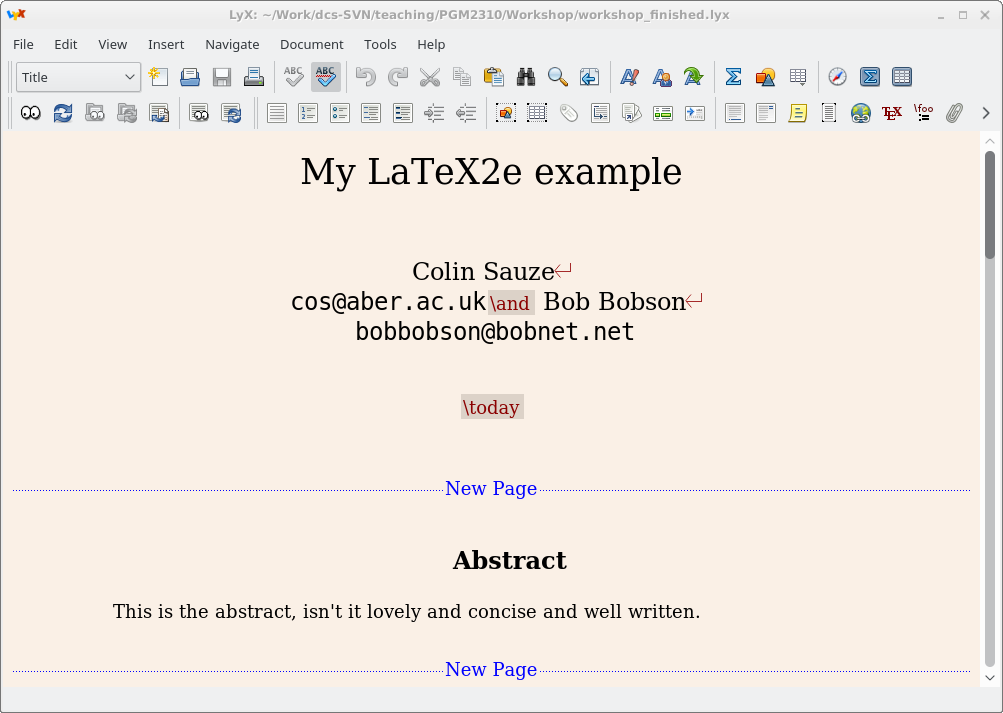Common Problems and useful tips
Overview
Teaching: 5 min
Exercises: 0 minQuestions
How do I format URLs into my document?
How do I insert some common symbols?
How do I get images into the right place?
Is LaTeX really worth all this hassle?
Are there any easier to use alternatives?
How do I convert LaTeX to MS Word for my colleague/journal who insists we use Word?
Objectives
Understand some common problems encountered in LaTeX and solutions to them
Know about some utilities to make LaTeX easier to use
URL Formatting
LaTeX often doesn’t like URLs in the code. Use the hyperref package and the \url{} command to include them, this will also make them a clickable hyperlink in the PDF. Sometimes certain characters have to be escaped with \ character in front of them. Alternatively you can change them to an ASCII code with the code \%<code>, using a code from asciitable.com. For example http://www.mysite.com/somepage?a=1&b=2 would become either \url{http://www.mysite.com/somepage\?a=1\&b=2} or \url{http://www.mysite.com/somepage\%3Fa=1\%26b=2.
Special Characters
- £ sign, use
\poundsor\textsterling <or>symbols:\textlessor\textgreater- Exponents (e.g. 2 8 ):
2\textsuperscript{8} - Degrees symbol (e.g. 45 ◦ ), load the siunitx package and use
$\SI{45}{\degree}$
Images in the wrong place
- Use [ht!] on the begin figure line:
\begin{figure}[ht!] - Move the source location of the image, this can make reading the source annoying but can make it appear in a better place on the page.
- Resize the image slightly by adjusting the
[width=xcm]or[height=xcm]to the\includegraphicscommand.
Is it worth the hassle?
- LaTeX might be more effort for smaller documents but it really pays off with bigger documents.
- Many Journals offer a LaTeX template and an example file which takes away a lot of the hard work.
Useful Utilities
- LyX is a “What you see is what you mean” editor, it shows things in a nice graphical format that represent’s how you intend it to look but is nothing like how it will really look on paper. It can use LaTeX commands, import/export LaTeX files and produces documents by converting to LaTeX first.

-
latex2rtf converts LaTeX output to RTF files which can be read by MS Word. Useful for when you need to give somebody who doesn’t know LaTeX a document for them to edit or a Journal insists on Word file submissions.
-
jabref is a BibTeX database manager that lets you manage your BibTeX database. Mendeley can also export to BibTeX.
Key Points
Use the hyperref package and url command to handle URLs. Some characters might need escaping.
LaTeX has lots of commands for common special characters you might type in on the keyboard.
Images often appear in the wrong place, use [ht!], resize the image or move the reference to the image to a different place in the LaTeX code.
LaTeX can be hassle especially on smaller documents but really comes into its own on big documents.